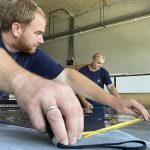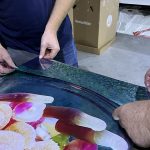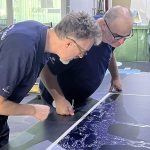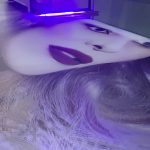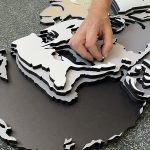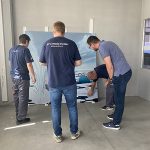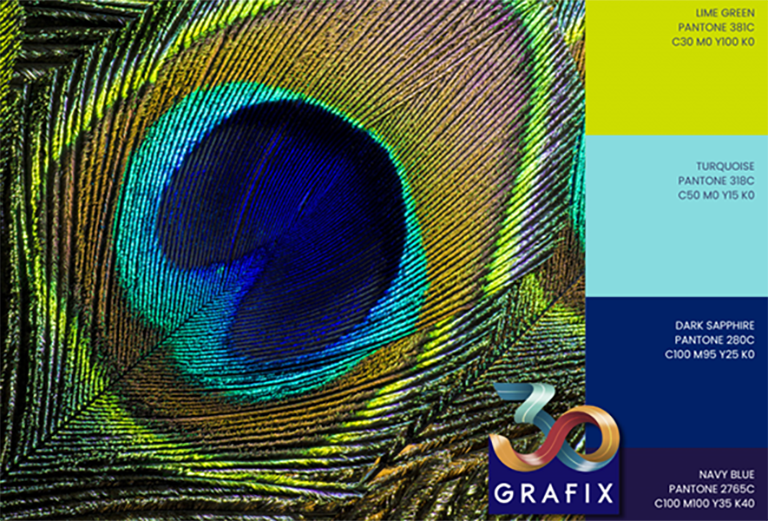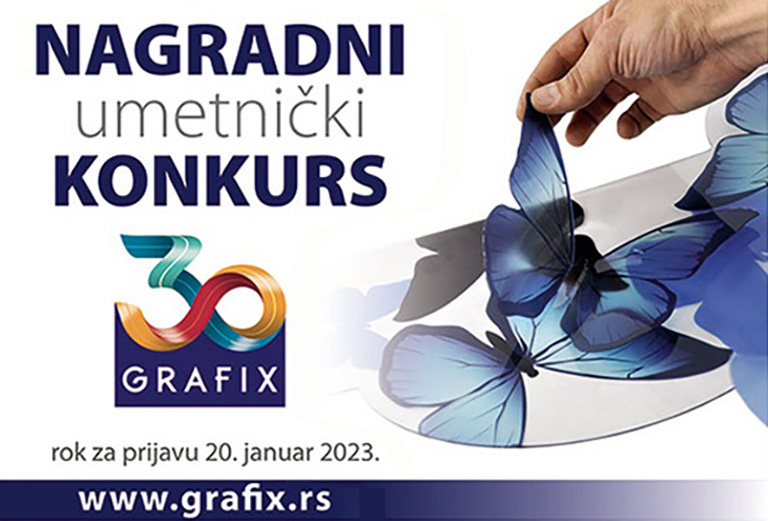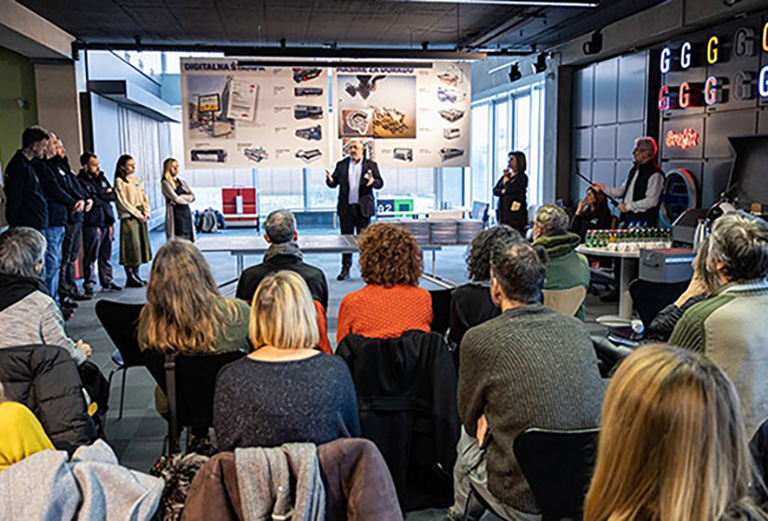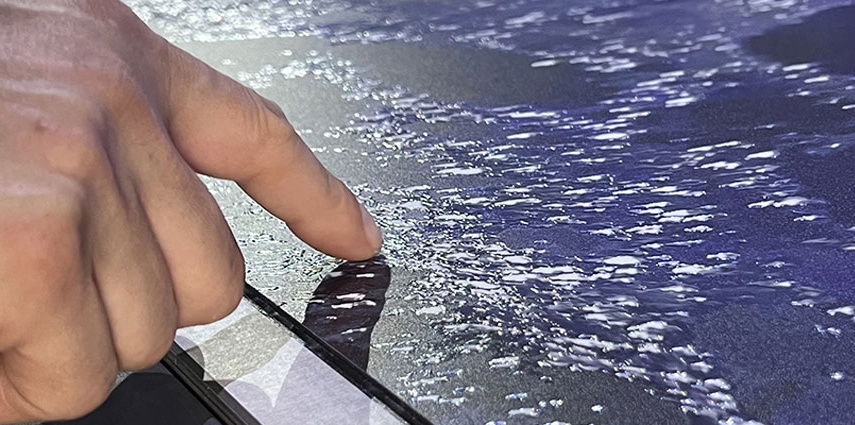
The 20 recipes of selected works for the exhibition involved almost every technology at our disposal in the production, roll to roll, flatbed.
What lifted us all up was the complexity of the artworks. Using the maximum potential of people and technical capabilities of equipment. The process of technological review of the recipe, planning, coordination and execution were, in the first place, mental tension individually and as a team. The bigger the challenge, the more she stepped up, asked us for a higher level and brought some new experiences:
How the used materials behave in printing, combining several types of materials, challenges in joining different materials, new technologies for gluing, new technologies for printing white color and varnish on non-standard materials…
For this project, we used 32 different materials, which, although familiar, were approached and applied in entirely new ways.
For the first time, we performed double-sided, multi-layer printing on large and heavy acrylic pieces. We used a new method to print metallic materials with white ink and lacquer, laser-cut wood, printed and combined it on multiple layers, combined acrylic and transparent film with printing, and bent aluminum composite materials in multiple directions…
The experiences gained with these materials are invaluable for future projects!
Joining Parts
The more complex works had many or large parts to be joined. Joining parts is a non-digital process and therefore requires significant experience and knowledge of material properties. In addition to our colleagues from the workshop who provided lightboxes, frames, and supports, laser cutting of wood, our colleagues from printing and finishing gained new experiences in choosing adhesives, gluing, laminating materials, cutting, bending, drilling, stapling, and assembling. I believe we all advanced in new skills, precision, and the quality of the final product.
Quality Control
In commercial work, we often talk about “production quality,” which is a compromise between speed and print quality.
For this project, only the highest quality was acceptable, so quality control was a “nightmare” in production. If any anomaly was detected on the material, it was replaced. If there were printing errors, scratches, or defects, the print would be redone. Naturally, such things happen in live production, but thanks to our experience, the design and printing teams managed to keep these issues to a minimum! Finally, we are satisfied with the results.
How Many Meetings Did We Have?
83? 183? In order to get to the final work, it was necessary to go through: selection of works, defining, making samples, correcting samples, preparing for printing, printing, cutting, assembly and control!
The project is conceived as more monthly, specifically 6 months for development and production. Although there was enough time, it is still about twenty unique complex recipes.
We had meetings daily, weekly, and if necessary several times a day in various formations.
Keyword management. The project asked us to apply all the experience from the commercial organization to the project in full. We reduce the thinking of 2000 pieces to 20.
I think it is important to point out that the whole project ran in a natural rhythm without crises and that problems were solved quickly and efficiently. Of course, we will quickly forget those problems, remain richer for valuable experience and remember only successful and efficient realizations!

